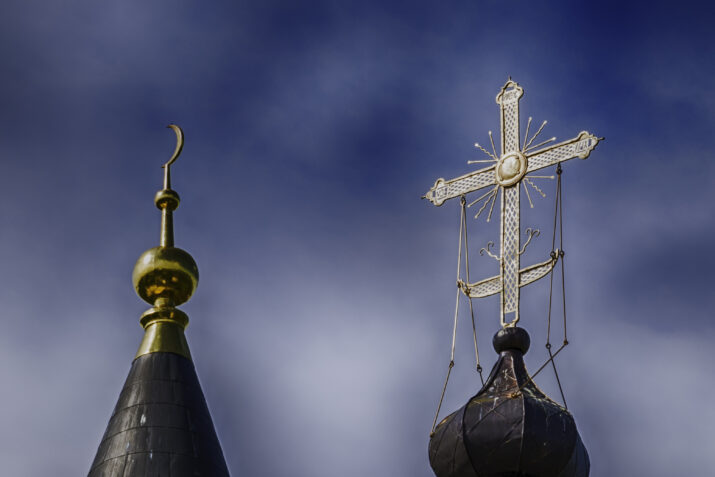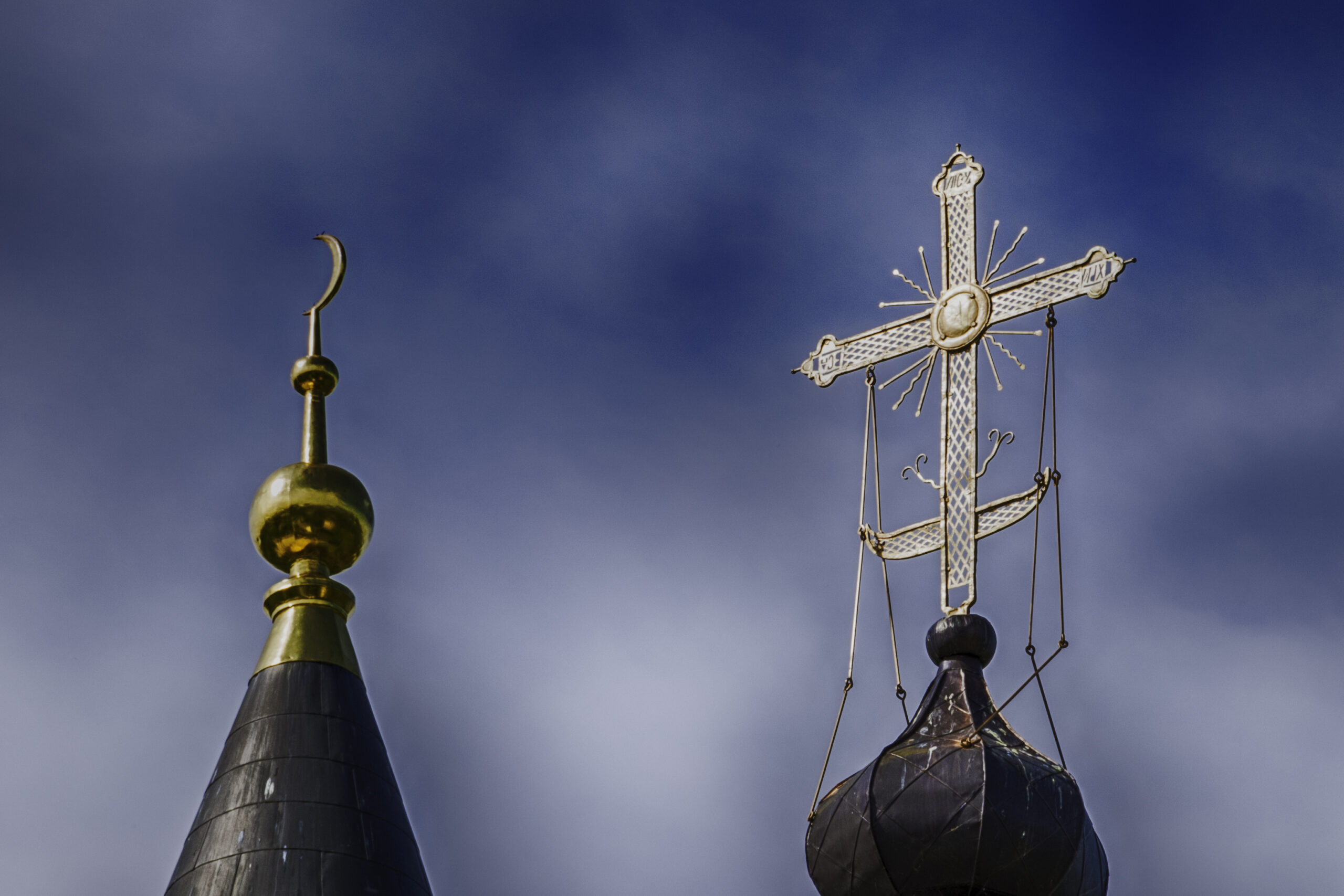

This is part of our roundtable, Forced Migration.
According to the United Nations High Commissioner for Refugees (UNHCR), the number of cross-border entries in Europe peaked in 2015, when more than a million people entered the continent after fleeing violence in mainly Syria but also Afghanistan and Iraq. Many risked their lives crossing the Mediterranean to reach Greece, Italy, and Spain in fragile, overloaded boats. Thousands tragically did not survive the perilous journey. This number more than halved in 2016 and fell further in 2017-2019, partly due to tighter policies such as the European Union’s (EU) controversial deal with Turkey and stricter border controls in countries bordering the Mediterranean. Notably, the operations led by the European Border and Coast Guard Agency (Frontex) have interfered with the usual routes used by people-smugglers and thereby reduced the number of migrants entering the EU. The outbreak of COVID-19, which led many countries to restrict the movement of people across borders and temporarily interrupt the asylum application process, resulted in the number of people entering Europe in 2020 and 2021 further declining. This trend drastically changed with the outbreak of the war in Ukraine in February 2022, as a new wave of more than five million refugees entered the EU.
Although non-European countries neighboring those where communities have been affected by violent conflict have received a much greater number of people than European countries, national and local authorities in Europe have struggled to welcome and integrate the newcomers. The blame has been laid on these destination countries’ limited resources and overburdened local and national services. However, people fleeing from Ukraine have elicited a much more positive response from authorities, indicating that the most important obstacle in welcoming new arrivals has been a lack of political will rather than resources. While many politicians have argued over how to significantly reduce the number of “people on the move” settling in various countries, civil society groups and organizations at local and national levels have played an essential role to provide day-to-day care for people arriving in local communities. In this article, the term “people on the move” is used to challenge the legally based dichotomy between “refugees” and “migrants,” which is unconstructive. As argued by Pijnenburg and Rijken (2020), although refugees and migrants might have different reasons for leaving their home communities, they are equally entitled to universal human rights. When these groups arrive in Europe, they are indistinguishable from each other, having traveled the same routes and exposed themselves to the same dangers; and they are in need of the same international protection. Furthermore, people might leave their communities as migrants but travel through countries where they are subject to persecution, which turns them into refugees, further invalidating the distinction. Hence, the term “people on the move” most adequately reflects the complexity of the reality on the ground.
Certain civil society groups and organizations that address the needs of new arrivals in Europe are affiliated with a particular faith. Many such faith-based organizations (FBOs) have had a long-standing tradition of helping people in need, often drawing on their faith to “welcome a stranger,” which entails offering protection and hospitality to people arriving into new communities. Research has shown that FBOs can assist newcomers in many different ways, including by supporting them in making friends and building networks, improving their language skills, and connecting them to local educational, employment, and healthcare services (Foner and Alba 2008; Ives, Sinha and Cnaan 2010). Historically, FBOs in Europe have either worked in isolation or collaborated with secular organizations. In response to the 2015 wave of people arriving in Europe, people of various faiths have joined together in a number of projects. Examples of this new kind of multifaith cooperation include the Goda Grannar (Good Neighbors)[i] project established by Islamic Relief, Stockholm Mosque, and the Katarina Parish in Södermalm, Sweden. In the UK, local faith-based groups have played a vital role in assisting the British Red Cross in the implementation of a project focused on integration—Refugee Support. In Germany, as part of the initiative Weißt Du Wer Ich Bin? (Do you know who I am?)[ii], the government has taken the additional step of requiring that Christian, Muslim, and Jewish groups and organizations work together to receive funding for their integration projects (Lyck-Bowen and Owen 2018).
Using Goda Grannar as a case study, this research draws on 20 interviews with various stakeholders and 22 questionnaire responses to explore this new multifaith approach to integration, focusing on some of the benefits it presents and obstacles it has faced. The article focuses on what “people on the move” think about taking part in multifaith integration projects and proposes that this new approach is especially important to counter the current narrative that it is more important to welcome and integrate Christians—especially from Ukraine—than Muslims from the Middle East, Africa, and Asia.
The Goda Grannar project
The foundations for Goda Grannar were laid when a Christian pastor from the Södermalm—a district of Stockholm—congregation knocked on the door of the local mosque and asked if any assistance was needed to serve people who had fled from war and poverty and arrived at Stockholm’s central train station in 2015. Since that initial contact, the two congregations have helped welcome and integrate thousands of newcomers into the local community. Through the Goda Grannar project, volunteers from the two congregations have organized many local activities such as language cafés and sessions where participants can receive support as they integrate. The volunteers have also organized sporting and social events that have helped new members of the community better settle.
Interviews with the coordinators of the Goda Grannar project revealed that many benefits derive from volunteers working together across faiths (Lyck-Bowen and Owen 2018) and that some of these benefits relate to the quality of the services offered. The coordinators reported that they can achieve more together because each congregation has particular skills and knowledge. Within the Muslim congregation, some members can help translate and interpret from the participants’ native languages into Swedish and understand the religious and cultural needs of the newcomers. Perhaps most importantly, volunteers might have had similar experiences of being “on the move” and arriving in a new community. Moreover, members of the Christian congregation are knowledgeable about Swedish culture and traditions and have experience in accessing medical care, education, employment, and social welfare. In addition, by working together, the project’s participants also have access to more resources, since the religious leaders of both congregations have successfully encouraged their respective members to be welcoming and to volunteer or donate money to the project.
Both religious congregations have benefited from working together toward a common aim because it has given their respective members opportunities to get to know each other better, gain a further understanding of each other’s culture and religion, and make new friends across the religious divide. The integration project has also catalyzed cooperation between the two congregations in other areas, and the multifaith aspect of the project has provided significant publicity for both communities, which has been important in the fierce competition for funding. Finally, the cooperation has had some broader societal benefits. It has highlighted the positive role FBOs can play in an otherwise secular society where religion is often perceived negatively; and it has emphasized that people from different faiths can successfully work together for the common good. By including communities of different faiths, the project has also countered one of the most common criticisms of religious involvement in social work, namely that of proselytism. However, collaboration across faiths has not come without obstacles. Skepticism and resistance toward the common project were originally found within both congregations. In response, the imam and pastor used their weekly services to promote the project and emphasize its importance. They also helped when religious differences created obstacles in the relationship by encouraging people to focus on their commonalities.
Reactions to the multifaith approach to integration from “people on the move”
One of the most noteworthy concerns raised by participants in the multifaith integration project was that the religious affiliation of the organizations prevented some newcomers from engaging with the project. Two interviewees mentioned that they had friends who did not want to participate in activities affiliated with religion in their destination communities because religion had played a significant role in their decision to leave their respective homelands, thus underlining the importance of offering secular alternatives to multifaith integration projects.
However, many participants emphasized that the project had been important in helping them celebrate their religious festivals and uphold their religious rituals. In particular, they mentioned that Goda Grannar’s celebration of Ramadan and the support they received for praying daily had been particularly valuable. Some respondents did not think that the project had helped them in this area; these people may not have needed this assistance because the project is based in a diverse neighborhood of Stockholm, where mosques and halal supermarkets are easy to locate. The lived experiences of moving and settling in a new community, as well as the shared intersectional identity of many of the volunteers and staff working in the Goda Grannar project, were also mentioned as particularly helpful in enabling people involved in the project fully understand the needs of the new arrivals.
Most of the participants stressed that the multifaith aspect helped them understand the role of faith in their new communities in comparison to that role in their homelands. Participants also highlighted that their perception of the potential relations between Muslims and Christians had changed, because they saw that both groups could work and socialize together. Many participants came from countries where such interreligious interaction is not common. Some also argued that talking to people from other faiths about their own beliefs and practices had made them more open and accepting of other faiths, while others underlined the freedom of religious beliefs and practice in their new communities. They may not have had such freedom in their home countries, where it may not have been possible for them to follow a particular school of religious thought or freely change religion. Others emphasized that they no longer evaluated people based on how religious they were. Furthermore, most participants in this study became friends with local residents outside their religious or ethnic groups, which research has shown can help in the integration process (Putnam 2000). Breaking down barriers between local communities and the new arrivals is also important to build social cohesion, for example through the organization of parties and outings. However, two interviewees reported that, although they had met local people via the project, these encounters had not turned into friendships outside of it and that they were still on the waiting list for Goda Grannar’s family friendship program, which links local families from the Christian and Muslim congregations with newly arrived families. They were hopeful that program would help them build new friendships.
Countering narratives based on religion and race
In recent years, right-wing politicians across Europe have perpetuated the narrative that it is more important to help Christians than Muslims. Already in 2015, Hungary’s prime minister and leader of the center-right Fidesz party, Viktor Orbán, claimed that Muslim people entering Europe threatened Europe’s Christian roots and culture.[iii] In 2018, he went as far as claiming that they were “invaders” and that multiculturalism was nothing but an illusion.[iv] Moreover, the governments of other countries in the region—Poland, the Czech Republic, and Slovakia—have implemented resettlement schemes specifically for Christian Syrians. In Poland, Miriam Shaded, who heads an organization that focuses on resettling Christians only (with the government’s approval), has even argued that non-Christians arriving in Poland were a threat to national security because of their links to ISIS.[v] This narrative, once based on religion only, came to include a racial component when the war broke out in Ukraine, causing millions of mainly white Christian Ukrainians to seek sanctuary in other European countries. Countries that had shut their borders to people fleeing violence and poverty in the Middle East, Africa, and Asia have welcomed white people from Ukraine with open arms. As part of temporary resettlement schemes, many European governments have offered Ukrainians much greater support and many more rights, compared to those granted to people migrating from the Middle East, Africa, and Asia. Despite similar levels of violence in places such as Sudan, Ethiopia, and Palestine, no resettlement schemes have been implemented for people from these countries. Moreover, credible reports have emerged describing how white women and children have been prioritized on trains leaving Ukraine, while African women were left behind. The dehumanizing treatment of non-white international students and permanent residents in Ukraine has also been documented.[vi]
Improving integration in new ways
The political rhetoric that places some migrants above others based on race and religion threatens to undermine basic human rights—protected under international law—and social cohesion in Europe. At a time when many local and national authorities in Europe struggle to welcome and integrate “people on the move,” who are often unsatisfied with the support they receive upon arrival (European Migration Advisory Board 2019), multifaith approaches represent new encouraging paths to integration that offer benefits in terms of the quality of services provided. One of the most compelling initial findings of this study is that the shared lived experiences and identities of staff, volunteers, and participants facilitated the provision of closely tailored services. Future research in this area could focus on other shared identity markers such as LGBTQ+ and disability. More research is needed to determine the circumstances under which a multifaith approach to integration can challenge discrimination across the board; however, initial findings are encouraging.
Majbritt Lyck-Bowen is a research fellow at the Winchester Centre of Religion, Reconciliation and Peace and a member of the research team for A World of Neighbours, a network of integration practitioners in Europe.
References
European Migrant Advisory Board (2019): Ask the people – A consultation of migrants and refugees. https://ec.europa.eu/migrant-integration/librarydoc/ask-the-people-a-consultationof-migrants-and-refugees
Foner, Nancy and Richard Alba. 2008. “Immigrant Religion in the U.S. and Western Europe: Bridge or Barrier to Inclusion?” International Migration Review 42 (2): 360-392. DOI: 10.1111/j.1747-7379.2008.00128.x
Ives, Sinha, and Ram Cnaan. 2010. “Who Is Welcoming the Stranger? Exploring Faith‐Based Service Provision to Refugees in Philadelphia.” Journal of Religion & Spirituality in Social Work: Social Thought 29 (1): 71-89. DOI:10.1080/15426430903479270
Lyck-Bowen, Majbritt and Mark Owen. 2018. “A multi-religious response to the migrant crisis in Europe: A preliminary examination of potential benefits of multi-religious cooperation on the integration of migrants.” Journal of Ethnic and Migration Studies: 21-41. DOI:10.1080/1369183X.2018.1437344
Lyck-Bowen, Majbritt. 2019. “A Multireligious Approach to the Integration of Migrants in Europe: An Examination of Migrants’ Views on and Experiences of Taking Part in Multireligious Integration Projects.” Border Crossing 9(2): 79-96. https://doi.org/10.33182/bc.v9i2.823
Pijnenburg, Annick, and Conny Rijken. 2021.“Moving beyond refugees and migrants: reconceptualising the rights of people on the move.” In Interventions, 23(2): 273-293, DOI: 10.1080/1369801X.2020.1854107
Putnam, Robert. 2000. Bowling alone: The collapse and revival of American community. New York: Simon & Schuster.
[i] Svenska Kyrkan. 2023 “Goda Grannar” Goda Grannar – Katarina församling (svenskakyrkan.se)
[ii] Weisst Du Wer Ich Bin? 2024 WDWIB: Startseite (weisstduwerichbin.de)
[iii] Reuters. 2015. “Refugees threaten Europe’s Christian roots, says Hungary’s Orban.” Reuters, September 3, 2015.
[iv] Agerholm, Harriet. 2018. “Refugees are ‘Muslim invaders’ not running for their lives, says Hungarian PM Viktor Orban.” The Independent, January 9, 2018.
[v] Wasik, Zosia and Foy, Henry. 2015. “Poland favours Christian refugees from Syria.” Financial Times, August 21 2015
[vi] Howard, Phillip; Johnson, Bryan and Ah-Sen Kevin. 2022. “Ukraine refugee crisis exposes racism and contradictions in the definition of human.” The Conversation. March 22, 2022.
Published on April 15, 2024.




